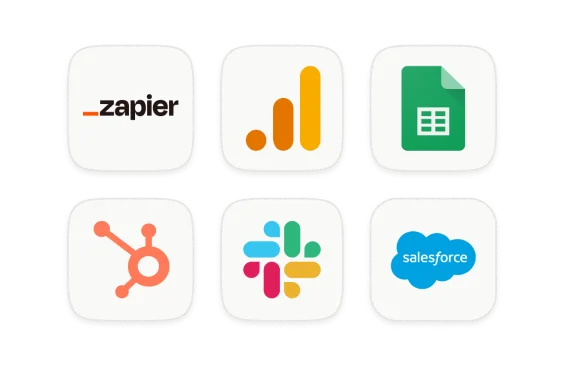Custom domains (for Enterprise plus accounts)
Your forms connect you directly to your customers, so why not put your brand front and center? If you’re on an Enterprise plan, read on to learn how to set up a custom domain to use across all your forms. You can set up one custom domain per Enterprise account.
In this example, we’ll set up the custom domain surveys.mybrand.com. Once you’ve set it up, this domain will display in the URLs for all forms created in your account. Before the change, a form from an account might have had the URL form.typeform.com/to/12345. After the change, the form’s URL will display as surveys.mybrand.com/to/12345.
1. Before adding a custom domain on Typeform, set up a CNAME record. A CNAME (canonical name) record lets you use your domain name as an alias for another domain. In this example, we're setting up surveys.mybrand.com as an alias for customdomain.typeform.com. If your Typeform account is under the EU data center, then you'll need to set your domain as an alias for customdomain.eu.typeform.com.
CNAME records are created through your domain host, or the company you bought your brand’s domain name from. Once you log into your domain host, you can set up a CNAME record under the DNS (domain name system) records section.
When setting up a CNAME record, you have to specify a host URL and a destination URL. In this example, surveys.mybrand.com is the host, and customdomain.typeform.com is the destination.
Depending on your domain host, your CNAME record looks something like this:
surveys.mybrand.com CNAME customdomain.typeform.com
or
surveys.mybrand.com CNAME customdomain.eu.typeform.com (if your Typeform account is under the EU data center)
The destination URL used in your DNS setting must always be customdomain.typeform.com or customdomain.eu.typeform.com. This is not a placeholder, so make sure to use this exact destination URL, and don't replace it with your own custom domain.
Contact your domain host if you have questions about setting up a CNAME record.
It can take up to 24 hours for the CNAME record to propagate, or update in Typeform servers. If you try to add a custom domain on Typeform before this time period has passed, you may see an error message:
Note: If there is a CAA record existing in the DNS, it should include the DigiCert, GlobalSign, Let’s Encrypt, and Sectigo/Comodo providers. In other words, you should include the following records for the domain to be set up properly, where example.com is the host:
example.com. IN CAA 0 issue "comodoca.com"example.com. IN CAA 0 issue "digicert.com"example.com. IN CAA 0 issue "globalsign.com"example.com. IN CAA 0 issue "letsencrypt.org"example.com. IN CAA 0 issue "sectigo.com"example.com. IN CAA 0 issuewild "comodoca.com"example.com. IN CAA 0 issuewild "digicert.com"example.com. IN CAA 0 issuewild "globalsign.com"
example.com. IN CAA 0 issuewild "letsencrypt.org"example.com. IN CAA 0 issuewild "sectigo.com"
2. To add the custom domain on Typeform, log in to your account. Click the organization avatar in the upper left-hand corner and go to Admin settings.
3. On the Admin settings page, click Change URL.
4. Choose the Custom domain radio button and click Confirm.
5. Type in your full custom domain name (the host of your CNAME), including the domain ending. Click Got it - Change my URL. The DNS record can take up to 24 hours to propagate, and you may see an error message if you try to add the domain on Typeform before 24 hours have passed.
On this dialog, you’ll see a notification that this change will apply to all of the forms on the account.
This means that if you have a form that was embedded on another site before you set up the custom domain, for example, your respondents will see a notice like the one below. They'll need to click Continue to view the new URL.
They’ll still be able to access the form, but you can avoid this step by changing the URLs in any live links or embed codes you’re currently using for your forms. The form IDs - the characters that show up at the end of your form URL - won’t change after you set up a custom domain.
Redirects don't apply to forms embedded using the form embed code, as that only includes the form UID.
6. If you’ve set up your custom domain correctly, you’ll see this message in the Edit your URL dialog.
7. Got your domain all set up? Great! Now, when you share a form by clicking Publish or going to the Share panel, all sharing URLs will show the new domain name.


